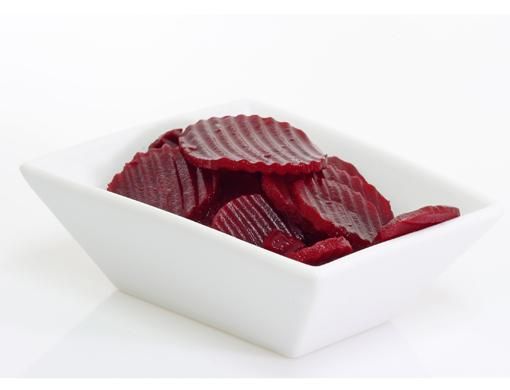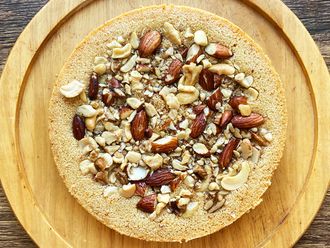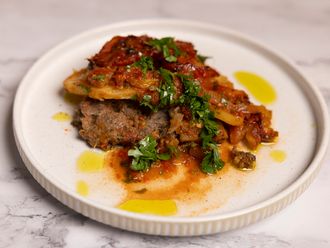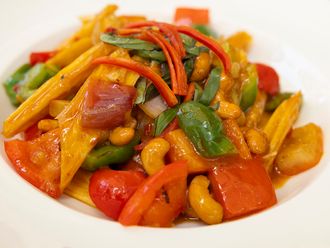
The humble beetroot has never had the prestige of a fennel or an artichoke.
But now it has not only entered the world of fine dining, it has also been given the status of a “superfood'' — being almost fat free, rich in iron and magnesium, and even helping in cancer prevention.
Beetroot was first used by the ancient Greeks, who cooked the leaves with honey. The root was prized for its medicinal qualities and used as a treatment for fevers, skin problems and digestive complaints.
The Romans ate the roots, making a salad with a dressing of mustard, oil and vinegar. In the 16th century, it was given as a “blood builder'' to people who were pale — its high iron content helps treat anaemia and fatigue.
Beetroot is also rich in folic acid, which is known to reduce the risks of birth defects if taken before conception and during the early stages of pregnancy. The vegetable is also low in fat, containing only 36 calories per 100g.
In addition to vitamin B, iron and zinc, beetroot is a good source of vitamins A and C, calcium, phosphorus, potassium, magnesium, protein and fibre.
And if that wasn't enough, researchers have recently labelled the vegetable as a “mood food'', because it contains betaine, known to relax the mind and help fight depression.
Research has shown that beetroot can inhibit tumour growth and has antioxidant properties that may help prevent cancer.
The veggie is also found in the form of a powder preparation or freeze-dried cubes. Beetroot juice is a great skin cleanser and can help cure acne.
New varieties of the vegetable are also being created, such as the “cocktail beetroot'' for parties and a “golden'' version, which has a yellow tone and doesn't leave stains.
Beet greens (used in salads and stir fries) are higher in nutritional value than the root, as they are a richer source of calcium, iron and vitamins A and C.
Beetroot has heaps of health benefits. It tastes salty and sweet at the same time and the colour is red or purple because of the presence of a variety of betalain pigments.
The roots and leaves have medicinal uses.
- Beetroot helps strengthen nerves, whether eaten raw or cooked.
- The juice of one beetroot a day can help reduce high blood pressure.
- Beetroot is a rich source of the mineral boron, which makes it a good aphrodisiac.
- Beetroot is a good laxative, which makes it good to ease constipation. Have a small piece of beetroot every day as a salad or a soup for maximum benefits.
- Beetroot is also a good breath freshener.
Beetroot also affects the liver's detoxification functions. The betacyanin in beetroot gives it the rich purple-crimson colour and is a potent cancer-fighting agent.
The fibres help maintain healthy cholesterol levels in the body and help regular bowel movement.
Beetroot can be eaten raw — you just need to peel it. The vegetable adds a refreshing touch to a salad or a sandwich (try it with cheese) or as an accompaniment to other veggies.
Try grating it to add to other vegetables, mixing grated beetroot with raspberry vinegar, mixing grated beetroot, grated orange rind and orange juice or grated beetroot in burgers.
Cooking beetroot
When you buy beetroot, it will usually have leaves and stalks attached. Just cut off the stalks but make sure you leave some of it intact.
It will help stop the beetroot from losing its colour and retain the nutrients. Beetroot can be steamed or cooked in boiling water. Cooking time can vary from 20-50 minutes depending on the size.
Test the beetroot with a skewer. When it's soft, remove it from heat and cool it under running water. This will make the skin easier to remove.
You can serve cooked beetroot as a hot vegetable accompaniment or allow it to cool and slice it to put on a burger.
Cut into cubes and stir-fry with some steamed, cubed potatoes and pumpkin. Add a little garlic and some diced onions — this makes a great dish to go with the rest of the meal.
Beetroot soup
The flavour of fresh beetroot is deliciously refreshing. Using a food processor to grate beetroot and chop vegetables saves time. Serve this soup hot or chilled.
- 450g potatoes
- 3 beetroots
- 1 onion
- 2 cloves garlic
- 600ml vegetable stock
- 1 sprig fresh rosemary
- 2 tsp balsamic vinegar
- 60ml natural yoghurt
- Black pepper, freshly ground
Peel and chop the potatoes, beetroots, onion and garlic. Use disposable gloves to prevent staining hands or use lemon juice to remove stains.
Put in a large saucepan with the stock, rosemary and balsamic vinegar. Bring to a boil.
Simmer for 45 minutes. Remove from the flame and allow it to cool slightly.
Remove the rosemary sprig. Pour into a blender or food processor. Blend until smooth. Add the yoghurt and season with black pepper. Reheat and serve.
Baked hammour with beetroot and potatoes
Serves 4
- 4-5 beetroots, medium-sized (total weight 350-400g)
- 740g potatoes, waxy
- 2 tbs canola oil
- 2 tbs dill, finely chopped
- Juice of 1/2 a lemon
- Hammour fillets, skinless, 4x175g
- 4 tbs brown breadcrumbs
- 25g Parmesan cheese, freshly grated
Preheat oven to 180°C. Wrap the beetroots, unpeeled, in foil with 3 tablespoons of water. Bake for 60-90 minutes until tender (check with knife). Turn off the oven and let the beetroots cool. Dice the beetroots.
Peel potatoes and dice them. Heat half the oil in a large non-stick pan and fry the potatoes, stirring frequently, for about 10-12 minutes until they are tender and brown.
Preheat the oven to 180°C. Add the beetroot, half of the dill and a squeeze of lemon to the potatoes. Season with salt and pepper. Place in a large baking dish.
Place the hammour fillets on the potato and beetroot mixture. Season the fillets with salt and a squeeze of lemon juice. Mix the remaining dill with breadcrumbs and Parmesan cheese.
Sprinkle the mixture over the fillets. Drizzle with the remaining oil and bake for 25-30 minutes until the breadcrumbs turn brown and the fish is cooked through (check with the tip of a sharp knife). Serve immediately.
Yoghurt and beetroot salad
- 2 beetroots, medium-sized
- 2 cloves garlic
- A dash of pepper
- 6 tbs yoghurt, low-fat
Get a deep bowl or a microwave container, put the beetroots in there and cover with water. Use plenty of water.
Microwave or boil on medium-high flame for about 10 minutes. Drain the water and let it cool.
Rub your hands over the skin of the beetroots and it should come off easily.
Don't peel the beetroots before boiling because all the flavour and colour will leech into the water. Chop the beetroot into little cubes. Chill in the refrigerator.
To make the dressing, crush quarter of a garlic clove into 1/2 cup of low-fat yoghurt. This is important: Do not overdo the garlic.
Season the yoghurt with some salt and pepper. Drizzle in a drop of extra-virgin olive oil.
Place the cooled beetroot cubes on top. You can serve this as a side dish to grilled fish, chicken or eat it as it is.
















